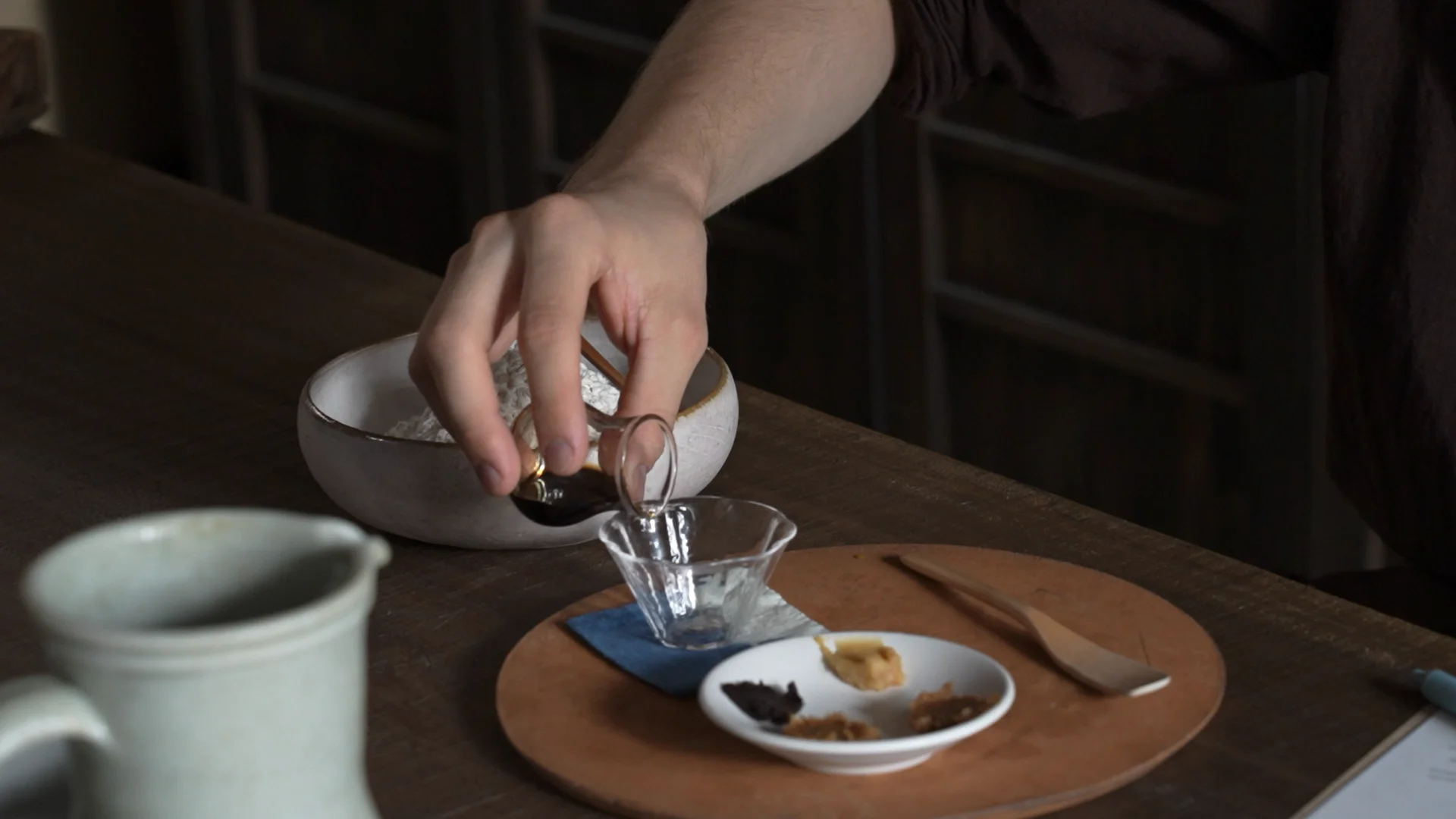Koji Fermentation Workshop
Elevate your everyday cooking with koji-fermented rice. Create your own unique Japanese condiments that naturally infuse every dish with umami.
Miso, shoyu, mirin, and pickles are essential to the Japanese table. And they tell the tale of the mircoseasons across a single year. Today, we know that fermented foods are essential for a healthy gut, supporting mental and physical well-being. Learn about the spectrum of fermentation styles across Japan, and koji’s vital role.
Make 2 fun personalized Japanese kitchen condiments for your home pantry using koji-fermented rice as the base ingredient: shoyu-koji rich with dried fruit or shio-koji with aromatic spices.
¥18,000
Tax included.
ABOUT SOME OF THE ARTISANAL NATURAL INGREDIENTS
Fermentation is a vital technique of sustenance for an island country of microseasons. And of this cookery technique, koji, the “national mold of Japan” is by far the star: servicing Japan’s distinct umami flavor profile.
* Key ingredients may vary depending on the season.

RICE KOJI
Koji-spore inoculated rice
Koji is a culture that when incorporated into rice (or barley or soy beans) serves as the starter for the many respected ferments of Japanese cookery, including miso, soy sauce, and nihonshu saké.

Miso
Soy bean-based ferment
Depending on the region, the shades, depths, and ratio of ingredients vary, however the base ingredients are always soy beans, salt, and koji. The distinct flavor of each region’s miso soup, mirrors the unique terroir.

Amazake
Koji rice
There are two types of amazake (sweet saké), one that is made with rice porridge and sakékasu (saké lees), and another made with rice porridge and rice koji. The latter is non-alcoholic, and often used as a cooking ingredient.
Environmental Impact
By using traditional preservation methods, individuals can reduce their reliance on industrially processed foods, contributing to a healthier planet.





Location
FAQ
What is the cancellation policy?
0% cancellation fee if canceled more than 7 days in advance. 100% cancellation fee if canceled within 7 days in advance.
What is your policy on children attending the workshop?
Children aged 6 and older are welcome to join. They will be charged the standard fee. At least one adult must accompany children under 13 years old.
What should I wear?
You will be working with food. Please dress accordingly. And please refrain from wearing fragrances.
What should I bring?
You do not need to bring anything. We will provide a workshop kit for you.
Is the workshop bilingual?
No, the workshop will be conducted in English, with some Japanese if necessary.
Do you accommodate private workshops?
Please contact atelier@maana.jp with the number of participants and the dates you’ll be visiting.
Choose an experience

Maana Atelier
Botanical Teas

Maana Atelier
Tea Dye

Maana Atelier
Earthen Wall

Maana Atelier
Fermentation

Tea House in Daitokuji
Tea Ceremony

Studio by Daitokuji
Pottery

MAANA ATELIER is a multi-faceted space created to explore the ever-expanding passions and new offerings for our community. This traditional machiya is thoughtfully restored to reveal its raw beauty and imperfections. A place for exploration through workshops, community events, and more.
ADDRESS
HOURS
Maana Atelier is only open to workshop participants.
In collaboration with
Kyoto Research Institute
Kyoto Research Institute was founded under the direction of Momoko Nakamura. Momoko’s interest stems from 20 years of communicating and educating on cookery culture and the food system, informed by anthropological field research across the Japanese archipelago. The Institute’s research now extends beyond food, expanding into both textile and home, with the growing understanding that each pillar of Japanese living originates from a single terroir.

